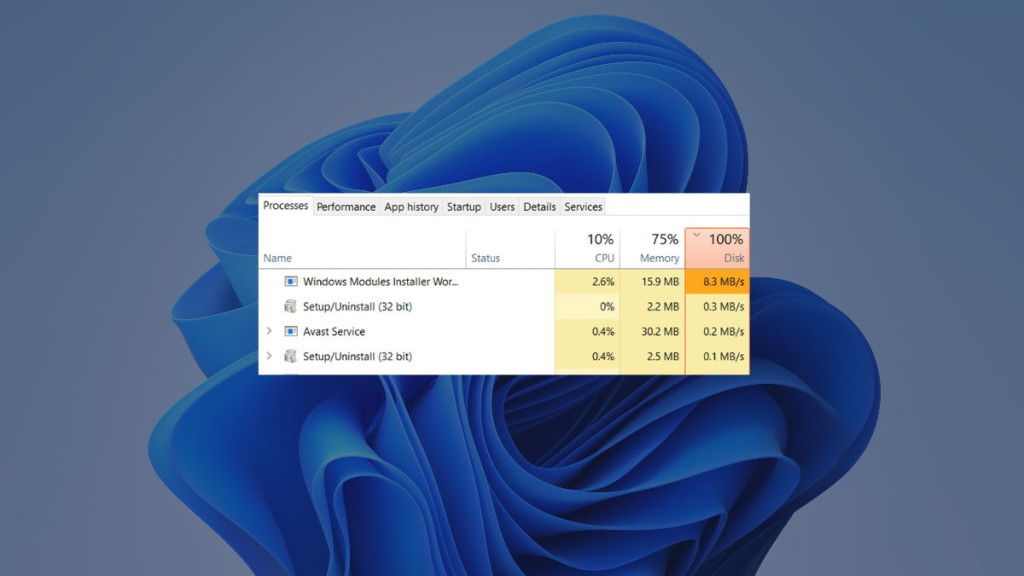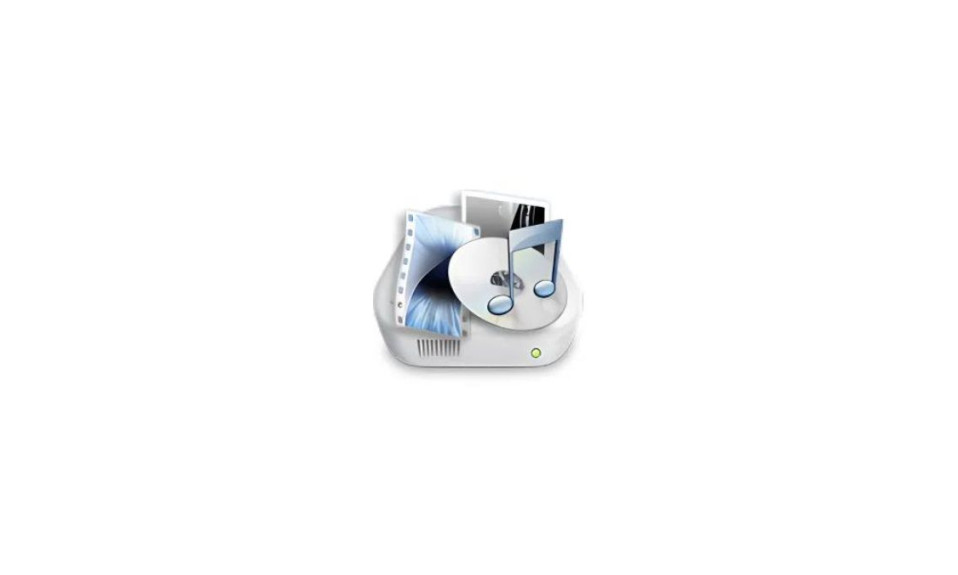
If you are experiencing a decrease in performance with your Windows 10 PC, you might have issues with your disk usage. There are many reasons why this happens but it is usually caused by misbehaving apps, as well as some system files that don’t match up with the operating system you are running on with dated drivers being the most common cause.
The significant telltale sign of this problem is if doing simple tasks like opening two or three tabs simultaneously becomes very slow, your browser becomes unresponsive for a couple of seconds or even minutes just after multitasking.
To confirm the disk usage on your PC:
- Launch the Task Manager by pressing the Ctrl + Shift + Esc at the same time.
- The utility will usually launch itself right on the Process tab. If not, then look for the “Processes” tab, and on the fifth row is the Disk Usage.
A normal PC would display an inconsistent percentage that is at least below 90%. However, if your computer keeps showing a consistent 100%, then you may need to fix the problem.

What causes the Windows 10 100% disk usage in Task Manager?
As mentioned above, there are many reasons why the Task Manager may show 100% usage on your disk despite having available storage left. One of the major causes is a deleted software component as well as corrupted system files.
Another major cause would be using a dated driver. Having a dated driver means your computer may have been using inefficient methods for performing even some of the most simple tasks like playing a song or a movie. Device drivers are what help all the hardware components work smoothly and efficiently on your Windows computer.
It also doesn’t help that even Windows has no way of updating drivers the same way any third-party app does. It can be frustrating. And even if you were able to be notified of a new driver update, you’ll probably encounter more issues with it than solutions.
Another cause of this issue is the apps installed on your Windows computer. Some software apps can be inefficient with their storage utilization (especially after the update), but any active developers would usually throw in some fixes have they verified the issue. Some legacy apps, however, don’t have the same luxury. That’s just something to keep in mind.
How to fix Windows 10 100% disk usage?
The following are the tried and tested methods for fixing this issue. This may, or may not work with newer and older versions of Windows. This, however, has been tested on a Windows 10 laptop and confirmed to be working.
Perform Disk Check
The first solution for fixing the 100% disk usage on Windows 10 is to perform a disk check via Command Prompt. Disk check allows your computer to look for any errors and issues on your HDD or SSD. It scans all the possible problem areas and suggests fixes should it locate any issues. To do that:
- On your Windows 10 computer, press the “Windows key” and “X” at the same time to launch a menu. From all the choices, choose Command Prompt (Admin).
- On the User Control window, click “Yes” when asked if you want to allow the programs to make changes.
- On the Command Prompt (Admin), type the following:
- chkdsk.exe /f /r
- On your keyboard, hit “Enter” and then type “Y” to confirm the disk check command. Make sure you close all the applications before performing this.
- If successful, you may check the Task Manager to see if it solves the issue. In case when Command Prompt can’t perform the action, restart your computer then launch the Command Prompt (Admin) again.
Reset Virtual Memory
Virtual memory is an extension of both your hard drive and random access memory (RAM). When the computer is running low on RAM, Windows will temporarily store the files on the virtual memory, then later utilize it using RAM if required.
Virtual memory is a hidden essential Windows component file that is sometimes referred to as a “page file”. If the page file accumulates, it may cause some issues with your disk, so resetting it will probably solve the problem and improve your system’s performance.
- On your Taskbar, type Advanced System Settings on the Search box.
- On the Advanced System Settings window, go to the Advanced tab then click Settings under Performance options.
- Now, inside the Performance options, click the Advanced tab again. Under Virtual memory, click Change.
- Make sure that the Automatically managed paging file size for all drives is NOT ticked. Otherwise, you won’t be able to change anything moving forward.
- Now select the Windows drive, the drive where the Windows OS is installed (usually C:), then manually set the Initial and Maximum size for your virtual memory.
- For the Initial size, we advise that you follow the number shown on the Recommended. For the Maximum size, we recommend that you don’t set this value too high.
This should always be 1.5 times the size of the physical RAM. For example, if your PC has 4GB (4096 MB) of RAM, then the maximum size for virtual memory that you can set should be no more than 6,144 MB (4096 MB x 1.5). - Now that you have set the value, click on Set then OK to continue. To finalize this solution, go to the instructions on how to delete .temp files below.
Delete all the .temp files
Now, to delete TEMP files:
- Click the Windows key + R at the same time to launch Run.
- On the Run form, type “temp” then press Enter. This will allow you to see the Temp folder where all the Temp files are installed.
- Now that you are in the Temp folder, highlight all the files then right-click to delete. You may check the Task Manager if this method solves the 100% disk usage problem.
- If not, restart your computer.
Disable the antivirus software
We all know how resource hungry all this antivirus software is. It may also have been the reason why you are getting 100% disk usage on your Windows 10. You may confirm that by running the Task Manager and seeing if any antivirus program is running in the background.
To stop them from consuming your resources:
- Launch the Task Manager, then under the Processes tab, look for the running app.
- Right-click on it, then End Task.
Disable the Superfetch service
SuperFetch is one of the essential components of Windows. It allows your computer to decrease its boot time, and app loading time more efficiently. However, it is also known to be one of the main reasons for the disk issues on modern Windows operating systems from Windows 8 onwards.
To disable Superfetch:
- Press the Windows logo key, then type Command Prompt. Select “Run as administrator“.
- If asked for permission, click “Yes“.
- On the Command Prompt, type the following:
“net.exe stop superfetch” then click Enter. - If not valid, try the following instead:
“net.exe stop sysmain” then click Enter.
Reset the StorAHCI.sys driver
A firmware bug may also cause issues with the computer’s driver, most especially with Advanced Host Controller Interface PCI-Express (AHCI PCIe). To try and fix this issue, follow the instructions below on how to reset it.
- Press the Windows logo key + X at the same time to launch the Device Manager.
- Inside Device Manager, look for IDE ATA/ATAPI Controllers then expand it.
- Double-click on the Standard SATA AHCI controller, then go to the Driver tab and then click Driver Details.
- Now, if you can see the “storahci.sys” stored in the system32 folder, then you are running the inbox AHCI driver.
- Now, you need to close the Driver Details window and go to the Details tab. Select Device Instance Path from the drop-down menu, and make note of the path, starting from VEN_.
- On your Search box from the Start panel, type “Regedit” then hit Enter to run the Registry Editor.
- Now go to HKEY_LOCAL_MACHINE then to the SYSTEM folder then the CurrentControlSet folder then Enum, and finally, the PCI folder. Look for the folder of the path, starting from VEN_ that you noted earlier.
- Click on that folder, then double-click on the “MSISupported” key and change the value to “0” and make sure “Hexadecimal” is clicked. Then click “OK” to confirm the changes.
- Restart your computer and launch the Task Manager if it solves the 100% disk usage problem.
Update device drivers
This issue may also happen if you are running a dated driver on your Windows 10 computer. Unfortunately, Windows makes it difficult to manually update each driver which feature is easily available on third-party applications like Driver Easy. You may download the app here.
Now that you have downloaded and installed Driver Easy, here is how to look for new drivers for your PC:
- Launch Driver Easy then press Scan Now.
- After scanning, go to the Update tab to see all the available updates.
- The Pro version of Driver Easy will let you automatically download and install all the drivers. If you are using the Free version, you may still download the drivers, but you may need to manually install each of them. We have a separate article on how to do that.
(NOTE: hyperlink to my driver easy tutorial will be added later on the bold phrase).
Frequently Asked Questions (FAQs)
Why is my disk usage at 100%?
There is really no specific answer as to why this is happening as it is usually caused by several factors. Things like a dated driver, corrupted system components, issues with your hard drive, or simply because of resource-hungry antivirus apps all contribute to this problem.
What is normal disk usage?
The normal disk usage should be under 100% with the inconsistent change in resource allocation. If the Task Manager shows a constant 100% usage, that means you have an issue with disk usage.
Does high disk usage causes lag?
Yes. High disk usage causes a lag which can be triggered by simply opening a couple of browser tabs, or doing multitasking. To solve this issue, follow the steps we have given above.




